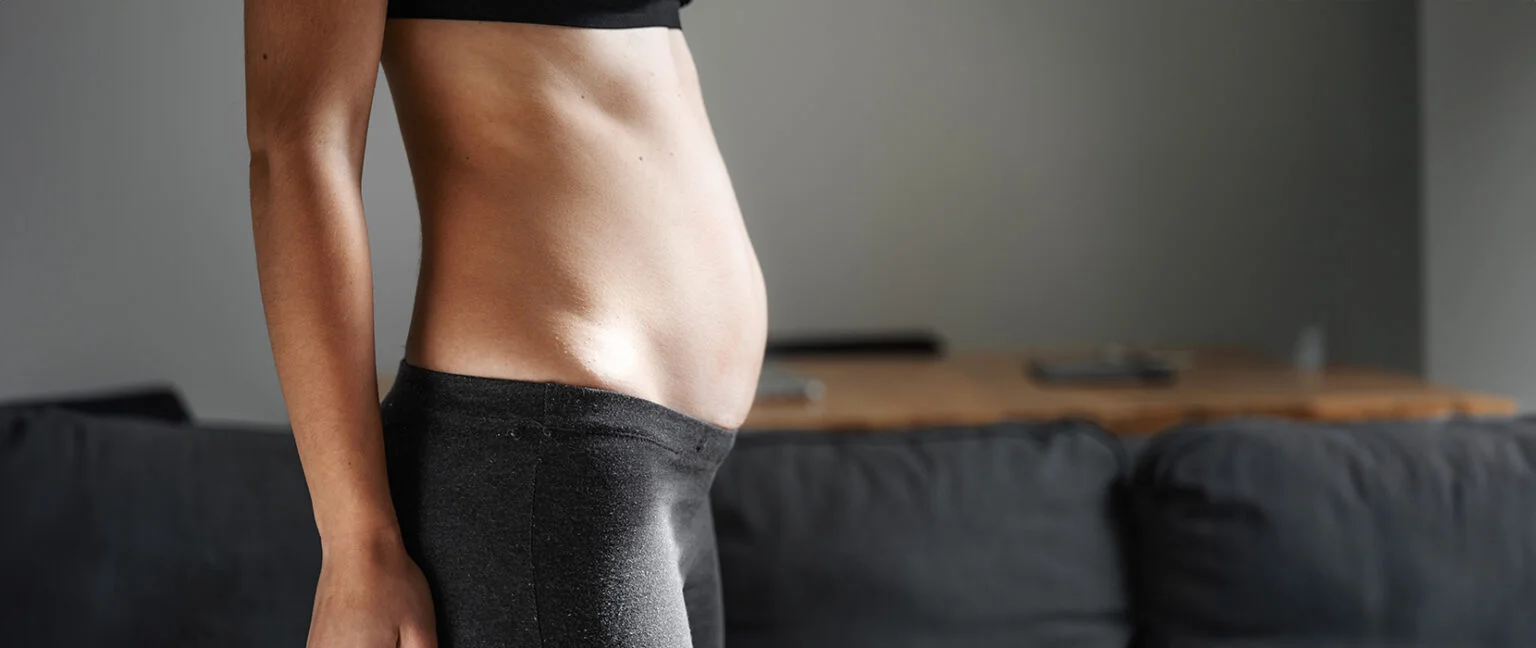Non-Surgical Solutions for Diastasis Recti at Ambrosia MD
Diastasis recti, often occurring during pregnancy, is a condition where the abdominal muscles separate, leading to aesthetic concerns and a weakened core. This separation can result in a noticeable bulge, reduced core strength, and increased lower back pain. At Ambrosia MD in Ottawa, we offer an innovative, non-surgical treatment using truFlex technology to help close the gap in the abdominal muscles, strengthen your core, and reduce discomfort. Our personalized approach, guided by Dr. Sonam Maghera, provides effective results without the need for invasive surgery. Reclaim your core strength and confidence with our expert care.

Understanding Diastasis Recti
Diastasis recti is a condition characterized by the separation of the rectus abdominis muscles, commonly known as the "6-pack" muscles. This separation occurs along the linea alba, the fibrous structure that runs down the midline of the abdomen. While diastasis recti can affect anyone, it is most commonly associated with pregnancy, where the rapid expansion of the abdomen places stress on the abdominal muscles, causing them to stretch and separate.
For many women, diastasis recti can lead to both aesthetic concerns and functional issues. The separation may leave a noticeable bulge down the midline of the abdomen, and even after childbirth, the muscles may not return to their original position. Beyond appearance, diastasis recti can result in a weakened core, leading to decreased stability and strength, as well as an increase in lower back pain and discomfort.

Symptoms and Risks of Diastasis Recti
The symptoms of diastasis recti can vary in severity but often include:
Visible Bulge: A noticeable ridge or bulge running down the midline of the abdomen, especially when straining or contracting the abdominal muscles.
Weakness: A feeling of weakness or instability in the core muscles.
Lower Back Pain: Increased lower back pain due to a weakened core that fails to support the spine effectively.
Poor Posture: Postural issues due to the imbalance and lack of support from the core muscles.
Pelvic Floor Dysfunction: Diastasis recti may also contribute to pelvic floor dysfunction, which can result in urinary incontinence and other complications.
Treatment Options for Diastasis Recti
Treating diastasis recti typically begins with physiotherapy and targeted exercises designed to strengthen the core muscles and reduce the gap between the abdominal muscles. These exercises focus on activating the deep core muscles, including the transverse abdominis, which plays a crucial role in stabilizing the abdomen.
However, in some cases, the gap may be too significant to close through exercises alone, and surgical intervention may be considered. Plastic surgery, such as abdominoplasty (tummy tuck), can physically bring the separated muscles back together. While effective, surgery is invasive and comes with its own set of risks and recovery time.

Innovative Non-Surgical Treatment with truFlex
At Ambrosia MD, we offer an innovative non-surgical treatment for diastasis recti using the truFlex muscle-stimulating platform. truFlex technology works by delivering multi-directional muscle stimulation that targets the core muscles, promoting their contraction and strengthening. Over a series of 4-6 sessions, many women notice a significant reduction in their diastasis recti, as the muscles begin to close the gap and regain their original position.
In addition to addressing the separation itself, truFlex treatments help to strengthen the entire core, which can lead to improved stability, better posture, and a reduction in chronic lower back pain—a common complaint among those with diastasis recti. The non-invasive nature of truFlex makes it an attractive alternative to surgery, offering effective results without the need for incisions, anesthesia, or lengthy recovery periods.
Before + After Gallery

Why Choose Ambrosia MD for Diastasis Recti Treatment?
At Ambrosia MD, our truFlex treatment is provided under the expert supervision of Dr. Sonam Maghera, a board-certified Sport and Exercise Medicine physician. Dr. Maghera and her team are committed to offering personalized care tailored to your specific needs, ensuring that you receive the most effective treatment plan for your diastasis recti.
Whether you're looking to avoid surgery or seeking to complement your physiotherapy regimen, truFlex offers a safe, non-surgical solution that can help you achieve a stronger, more stable core and reduce the visible signs of diastasis recti.
Interested in these treatments? Book your consultation now to learn more about how truFlex can help you overcome diastasis recti and improve your overall core strength and well-being.
Schedule a Consultation


